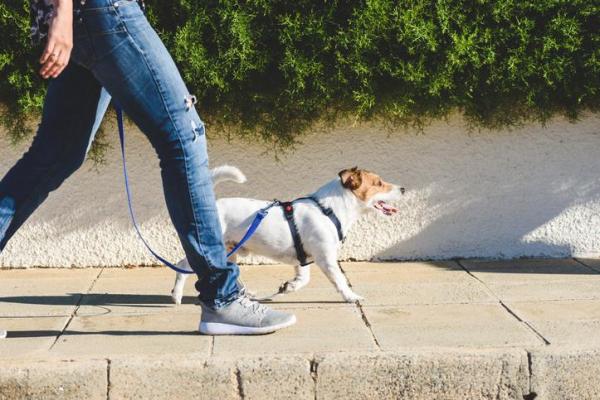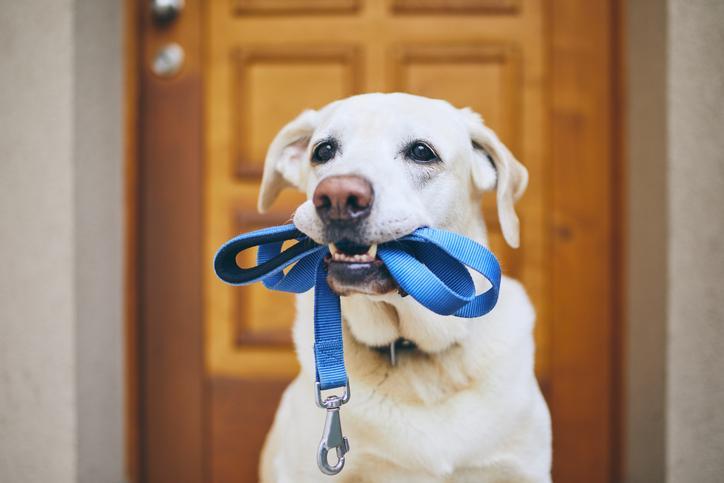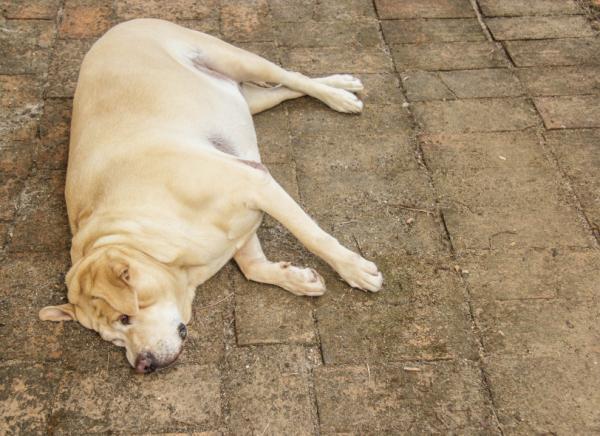What Happens if You Don’t Take Your Dog for a Walk?



See files for Dogs
Every dog owner knows how important it is to walk their dog on a daily basis. Taking your dog for a walk allows them to get rid of their pent-up energy. In addition, your dog will be mentally stimulated and socially enriched by the sights, sounds and smells they encounter. A dog that never leaves their property is likely to be bored, frustrated, and unable to get rid of their energy.
The following AnimalWised article explains the side effects of not walking your dog on their physical, emotional and mental health.
Benefits of walking your dog
It is important to remember that walking the dog is not a whim, but a necessity, since dogs, like many other animals, are not used to sitting still for long. In the wild, animals are expected to move around and explore their surroundings in search of water and food. Walking your dog is a simple task that has a positive impact on many aspects of their overall health. Some of the benefits are:
Exercise
Obesity is a major health problem in dogs, which in most cases leads to other medical complications. In this sense, regular exercise, such as walking, is a great way to burn the excess calories and get rid of the extra pounds. Exercise is also an easy way for dogs to use up their excess energy, especially in hyperactive dogs. In most cases, this excess energy manifests itself in "bad" or compulsive behaviors. Walking also releases excess energy and helps dogs sleep better at night.
Stimulation
Dogs do not like to be bored. If you keep them busy with something constructive, like a walk, they are less likely to engage in destructive behaviors, like chewing on your shoes or couch. It is essential for dogs to explore their environment with all their senses. This provides them with mental stimulation that also keeps them physically active, whether through smelling, seeing, hearing, touching or tasting. It is a common misconception that a house with a large garden or plot of land will meet this need of the dog. However, watching wildlife, exploring new trails, watching other people with their pets, etc. are great mental stimulation for your dog that he can not always get in a fenced-in area.
Learning
When walking, the dog is confronted with new situations that provide great learning opportunities. When you train a dog at home, there are no distractions. Walking allows you to try out the basic commands in an environment where it is more difficult for your dog to concentrate. For best results, take some training treats with you when you walk to reward your dog.
Socialization
When you walk your dog, you will probably encounter other dogs or people from time to time. Introducing your dog to other pets is a great way to teach them how to behave around strangers. Having your dog on a leash will also make these encounters safer in case one of the dogs reacts aggressively. Keep in mind that some dogs have difficulty interacting with their peers due to bad past experiences or poor socialization as a puppy.
Strengthen the bond with the owner
To build a bond with your dog, it's a mutual give and take of time, energy, and feelings. Walks not only build your dog's confidence, but also your bond. The owner's role of leader and protector is critical to a healthy bond with your dog. Dogs look forward to what are called "leadership walks" and respond amazingly well to them when they are done properly. On these walks, your dog learns to follow your lead. You set the pace, you decide where you go, and you decide when the walk begins and when it ends.
If you want to learn more about the importance of dog socialization, read this other article, where we talk about puppy and adult dog socialization and its benefits.

How often should I take my dog out?
Now that you know why it's so important to walk your dog, establish a proper walking routine tailored to your dog's specific needs. Since every dog is unique, there is no standardized walking routine for all dogs. Factors such as breed, age or physical condition, age, play an essential role.
Although it seems obvious, breeds that are very active, like the American Staffordshire Terrier or the Border Collie, need to go outside more often than breeds that are less active, like the Basset Hound or the Maltese.
Age also plays a critical role, and younger dogs need to go outside more regularly than older ones. This is because young dogs require more socialization, stimulation, and learning than older dogs to develop a reliable and stable character.
Regardless of your dog's characteristics, they should all be walked between 2 and 3 times a day throughout the day, depending on the duration of the walk.
As for the recommended duration of walks, it should be between 20 and 30 minutes, depending on the number of walks, or at least an hour if we can walk only once a day.
You may also be interested in this other article, where we discuss when the best time of day to walk your dog is.

What happens if you Don’t take your dog for a walk?
Now that we know all the benefits of walking your dog, let us discuss the negative effects that lack of exercise in dogs can have on their physical, emotional and mental health. A dog that never leaves its property is likely to be bored, frustrated and unable to get rid of its energy. Let us take a closer look at these effects:
Physical problems
A dog that does not get enough exercise is much more likely to develop certain physical problems, such as:
- Obesity
- Diabetes
- Joint pain
- Bladder infections
- Hypertension
- Cardiovascular problems
- Weakened immune system
In addition, the lack of exercise causes their muscles to become weak, making them more susceptible to injury.
Behavioral problems
Like humans, dogs can become depressed, suffer from anxiety, phobias or behavioral problems that prevent them from living normally in their environment. The lack of movement and stimulation favors the occurrence of certain psychological disorders that manifest themselves in behavioral problems, such as:
- Excessive barking: among the most common reasons why a dog barks a lot, stress plays a significant role. Stress occurs when your dog feels that one of their basic needs is not being met, such as exercising. In these cases, your dog uses barking as an escape route to express their frustration.
- Braking things: a dog that does not leave the house and has no external stimuli is more likely to be bored. When a dog is bored, it often starts destroying things around the house to relieve their frustration and entertain themselves. Remember that they never do it out of revenge for a punishment or a quarrel or out of malice.
- Inadequate urination and defecation: from a behavioral point of view, there are several reasons why a dog urinates at home. On the one hand, it may be a marking action, which is a natural instinct in unneutered dogs or bitches in heat. They can also use this behavior to get our attention and tell us to take them outside more often.
- Eating excessively: dogs that do not get enough exercise or are unable to interact with their owners or other dogs may develop a nervous feeding routine to alleviate their feelings.
- Aggressive behavior: there are many reasons why a dog may become aggressive, for example, dominance, territoriality, competitiveness, etc. If your dog does not go outside frequently, they may not learn the necessary social skills that can only be learned through social interaction. A dog that has not learned how to communicate and get along with other dogs may get into a dog fight.
Continue reading in this other article, where we talk about the most common types of aggression in dogs and how to treat them.

If you want to read similar articles to What Happens if You Don’t Take Your Dog for a Walk?, we recommend you visit our Basic care category.
- Paramio, A. (2010). Psychology and learning of dog training. 2nd Ed. Diaz de Santos Editions.
- V. Mª Mariotti, M. Amat, M. Hervera, M. Baucells, X. Manteca. (2009). Environmental factors involved in the control of dog and cat behavior: feeding, handling and exercise. clin. vet. small Anim, 29 (4): 209-215.







